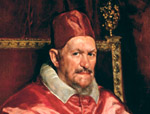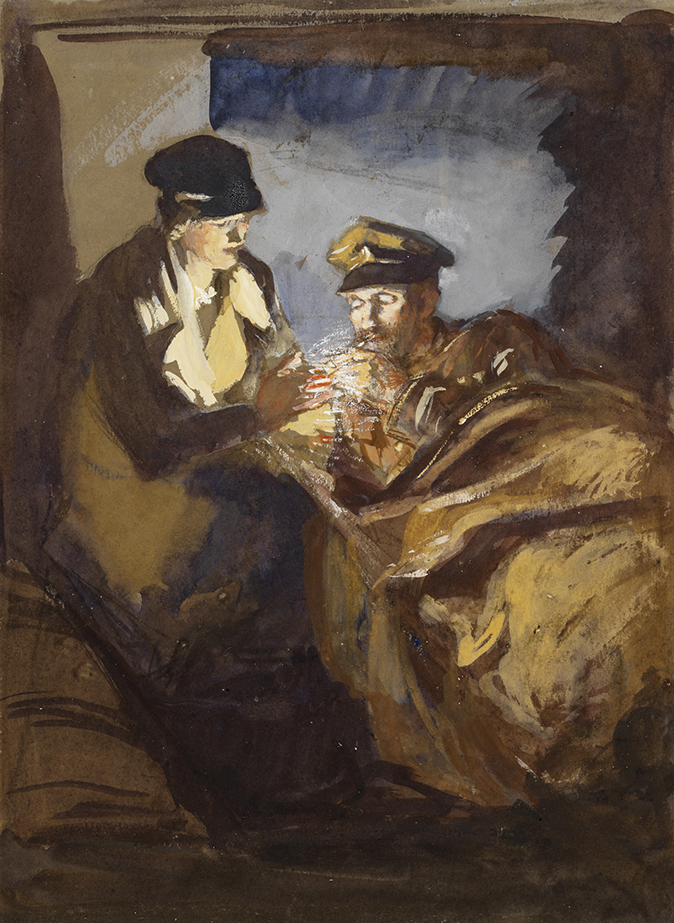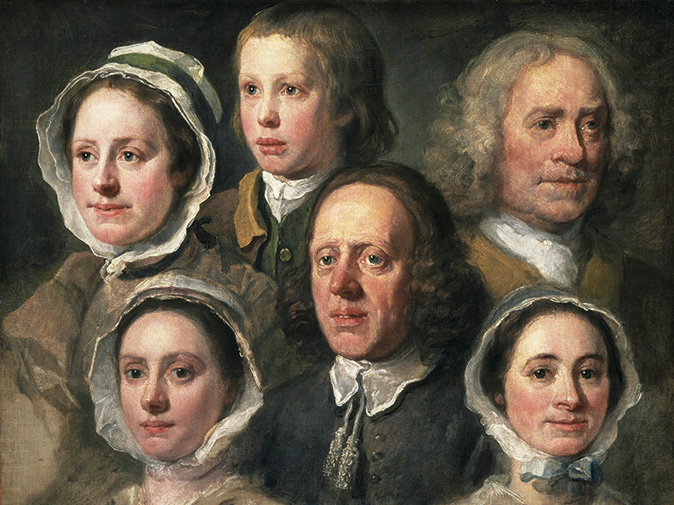My Favourite Painting: Nicholas Lyons, Lord Mayor of London
Nicholas Lyons, Lord Mayor of London, chooses a dramatic and expressive post-war image.


The Lord Mayor on his choice of Men of Destiny by Jack B. Yeats
‘Men of Destiny was painted in 1946, after the upheaval of a civil war and two World Wars. It is a brilliant example of the expressive, figurative style that epitomised the second, distinctive, phase of Jack’s creative life. The thickly applied paint in vibrant colours is mesmerising. The painting speaks of the nobility of the simple fishermen at Rosses Point, the glowering sky giving way to a sunlit horizon suggesting a more optimistic future.
‘It is particularly poignant to me as my father was writing the biography of Jack’s brother, William, when he died, unexpectedly, at the age of 59. I have fond memories of our occasional visits together to “Yeats Country”, Co Sligo, when he was doing his research.’
Nicholas Lyons is the Lord Mayor of London. On March 30, he will host the annual Lord Mayor’s Big Curry Lunch, which raises funds to support Armed Forces veterans finding employment. Tickets are on sale now.
Charlotte Mullins on Men of Destiny
In 1938, the poet Thomas MacGreevy wrote: ‘I do not think I am claiming too much for Jack Yeats when I say that nobody before him had juxtaposed landscape and figure without subduing the character of either.’ Men of Destiny exemplifies this, a powerful fusion of men, land and sea as if they are one living, breathing being. In a bravura piece of expressionism, Yeats’s men seem to grow out of the roiling sea at the land’s edge. They have been conjured by thick primary brushstrokes, early sunlight catching their faces and coat sleeves and streaking across the horizon below the turbulent sky.
Yeats was the younger brother of poet W. B. Yeats and son of the Victorian portrait painter John Butler Yeats. He grew up with his grandparents in the coastal town of Sligo in Ireland and early memories of fishermen and the mercurial sea would feed his art throughout his career. He lived through the protracted birth of the Republic of Ireland and this painting is often interpreted as referencing the Easter Rising. It marked the 30th anniversary of the event, its title recalling Eamon de Valera’s republican party Fianna Fáil (Soldiers of Destiny).
Yeats’s early muted realism gave way to a far looser style from the 1920s. His late works have a universal quality—it is as if these men stand in for all who would stop their work and fight for freedom. This painting was acquired by the National Gallery of Ireland four years before MacGreevy became director in 1950.

Stephen Fry’s favourite painting
Stephen Fry shares why he loves this famous Velázquez painting of Pope Innocent X

Jools Holland’s Favourite Painting
Jools Holland introduces his favourite painting – Tulip petal number 3

Credit: Bridgeman images
Exquisite houses, the beauty of Nature, and how to get the most from your life, straight to your inbox.
My favourite painting: Joanna Trollope
'It looks to me as if painter and subject were very well matched '

My favourite painting: Peter May
'Vividly coloured sailing boats in a harbour, which I gazed at for hours'

Credit: The Kiss - Gustav Klimt
My favourite painting: Danielle Steel
Danielle Steel, the world's top-selling fiction writer, admits that 'Klimt stole my heart' with this wonderful work.

My favourite painting: Sue Laing
'This picture both reminds me of her and throws into sharp relief the extraordinary advances made in military medicine and

My favourite painting: Jenny Uglow
'This is a tribute to the dignity and inner lives of “ordinary” people, profound and tender at once.'

Charlotte Mullins is an art critic, writer and broadcaster. Her latest book, The Art Isles: A 15,000 year story of art in the British Isles, will be published by Yale University Press in October 2025.